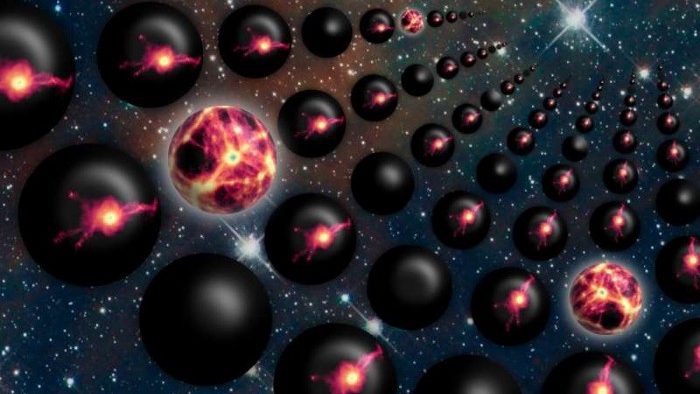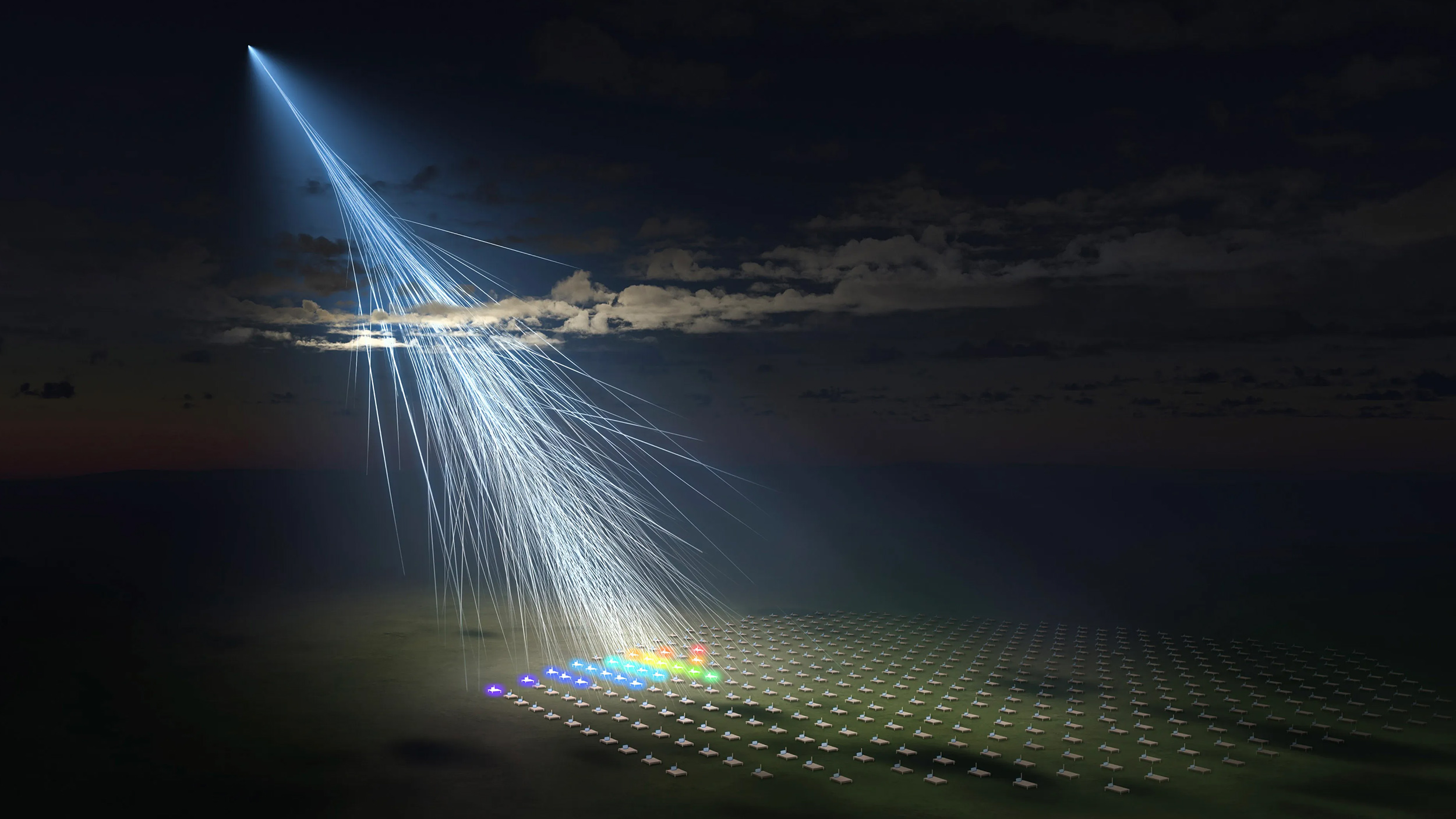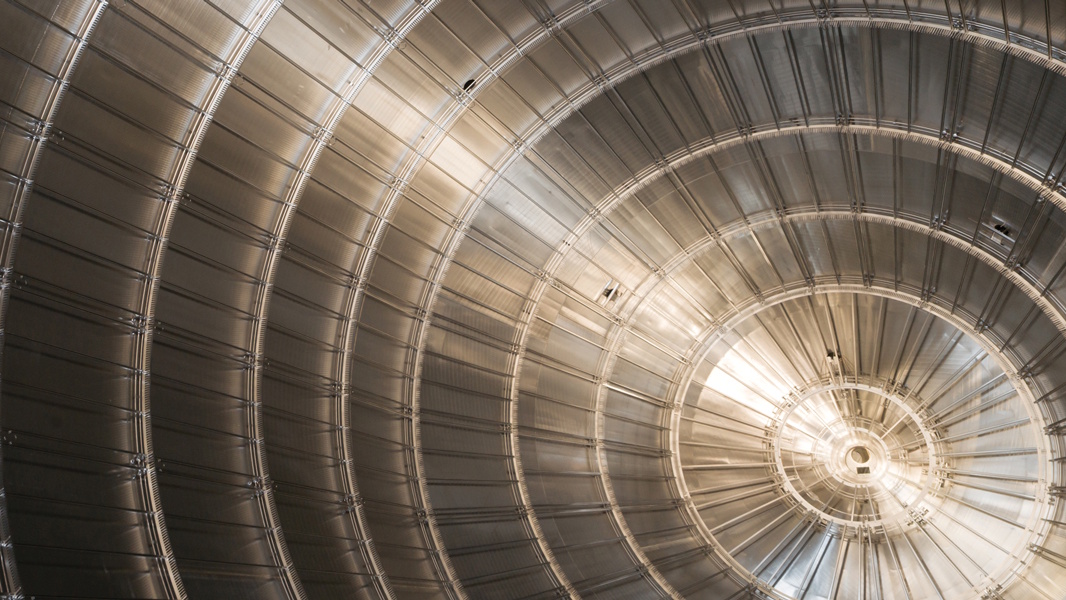Scientists validate upcoming mega-sized “ghost” particle detector

- A mile underground, a massive cavern has been excavated to host a key component of America’s flagship particle physics program, aiming to detect elusive neutrinos.
- The Deep Underground Neutrino Experiment (DUNE) will use two detectors, one at Fermilab and the other 800 miles away, to study neutrino oscillations and possibly explain the Universe’s matter dominance.
- The successful operation of prototype detectors has provided valuable insights, paving the way for the final implementation of the DUNE experiment.
Construction specialists have excavated a giant cavern that’s located a mile underground. It’s currently being outfitted with the infrastructure needed to host an enormous particle detector that aims to detect the passage of an antisocial particle called a neutrino. Meanwhile, scientists have constructed and successfully operated a functioning prototype version of these detectors, ensuring the future success of America’s flagship particle physics program for the next two decades. The completed excavation and detector prototype operation are enormous strides in the scientific community’s decades-long effort to understand the subatomic laws of nature.
In January 2015, a large collaboration of scientists formed to create a neutrino program with unprecedented capabilities. The program will consist of two detectors, separated by 1,300 km (800 miles) and connected by a beam of neutrinos that will pass through both detectors.
The beam of neutrinos will be created at Fermi National Accelerator Laboratory (Fermilab), located just west of Chicago, and will be shot through the Earth to the Sanford Underground Research Facility (SURF) in the Black Hills of South Dakota. SURF was created in 2006 at the abandoned Homestake Gold Mine. For nearly two decades, scientists have used a cavern at SURF located a mile underground to do experiments that would have otherwise been impossible, because of the steady rain of cosmic rays from space. The rock above the facility shielded the experiments. In 2017, excavation began to build a much larger cavern at SURF. This new cavern required the removal of nearly a million tons of rock. The excavation was completed earlier this year.
DUNE
The detector program is called DUNE, short for Deep Underground Neutrino Experiment. There will be two detectors, called the Near and Far detectors. The Near detector will be located at Fermilab, while the Far detector will be located at SURF. The Far detector will be gigantic, composed of 70,000 tons of liquid argon. The volume of the Far detector is equivalent to 12 Olympic-sized swimming pools.
Fermilab will shoot the neutrino beam first through the Near detector and then, after the beam passes through 1,300 kilometers of rock, through the Far detector. Scientists will compare measurements made at both locations to study how neutrinos change during the time it takes to pass from one facility to the other.
Neutrinos are most commonly created in nuclear reactions, and they interact only through what is called the weak nuclear force. Because the weak nuclear force is…well…weak, neutrinos interact very rarely, allowing them to travel very easily through matter. A beam of neutrinos could pass through the Earth with only a small chance of interacting.
However, despite their shy nature, very few neutrinos do interact. Roughly, for every 10 trillion neutrinos that pass through each of the planned detectors, only one will interact. For the Near detector, this works out to about 50 interactions per second; however, for the much more distant Far detector, the detection rate is expected to be more like one interaction every 10 minutes. The dominant cause for the difference? Just like a flashlight, the beam spreads out as it travels. Most of the neutrinos sent by Fermilab miss the Far detector.
The very rare interaction probability of neutrinos makes them challenging to study. However, scientists are very interested in them because of a unique behavior seen only in neutrinos: They change their identity. There are three known forms of neutrinos, and they can transform into one another. This is much as if a cat could change into a jaguar, and then a tiger, before changing back into a cat again. This transformational behavior is called “neutrino oscillation. It’s still not fully understood.
DUNE scientists will study neutrino oscillation but with a twist. The Universe is made entirely of matter, but our best understanding of the laws of nature suggests that our Universe should be made of equal amounts of matter and antimatter. Antimatter is a substance much like matter, but perhaps more accurately characterized as matter’s evil twin. Combine matter and antimatter, and they will annihilate each other in a spectacular release of energy.
Why does the Universe favor matter?
Antimatter was predicted in 1928 and first discovered in 1932. Since then, scientists have amassed a thorough understanding of antimatter. For every known form of matter, researchers have discovered a corresponding antimatter version. Just like protons, neutrons, electrons, and neutrinos exist, so do antiprotons, antineutrons, antielectrons, and antineutrinos. And both well-tested theory and experiment says that matter and antimatter should exist in equal quantities throughout the Universe.
Of course, this is not what we observe, which has led scientists to postulate that early in the Universe some still-unknown physical process slightly favored matter over antimatter. For every billion antimatter particles, there were a billion and one matter particles. The billions annihilated one another, leaving that tiny excess of matter particles to create the Universe we see today.
Researchers do not know why the Universe should slightly favor matter, but they do have a hypothesis, which the DUNE experiment is designed to test. Perhaps matter and antimatter neutrinos oscillate slightly differently. If they do, this could be an explanation for the observed matter dominance of the Universe. The name for this explanation is leptogenesis, coming from the word “lepton” — a class of particles that includes neutrinos — and “genesis,” which means beginning. If true, leptogenesis was an important process that shaped the behavior of the Universe.
The most recent accomplishment was that scientists have designed, built, and now operated four small prototype detectors using the same design as will be used in the final facility. The detectors have been placed in a neutrino beam at Fermilab, and they have successfully detected neutrino interactions. These prototypes will provide a goldmine of operational experience, which will make it much easier for scientists to get the final detector up and running.
Groundbreaking for the DUNE beamline at Fermilab began in 2019, and work on it continues. Meanwhile, scientists and engineers are busily working on the detectors. Researchers predict that both the beam and the first examples of final detectors could begin operations by the end of the decade.





